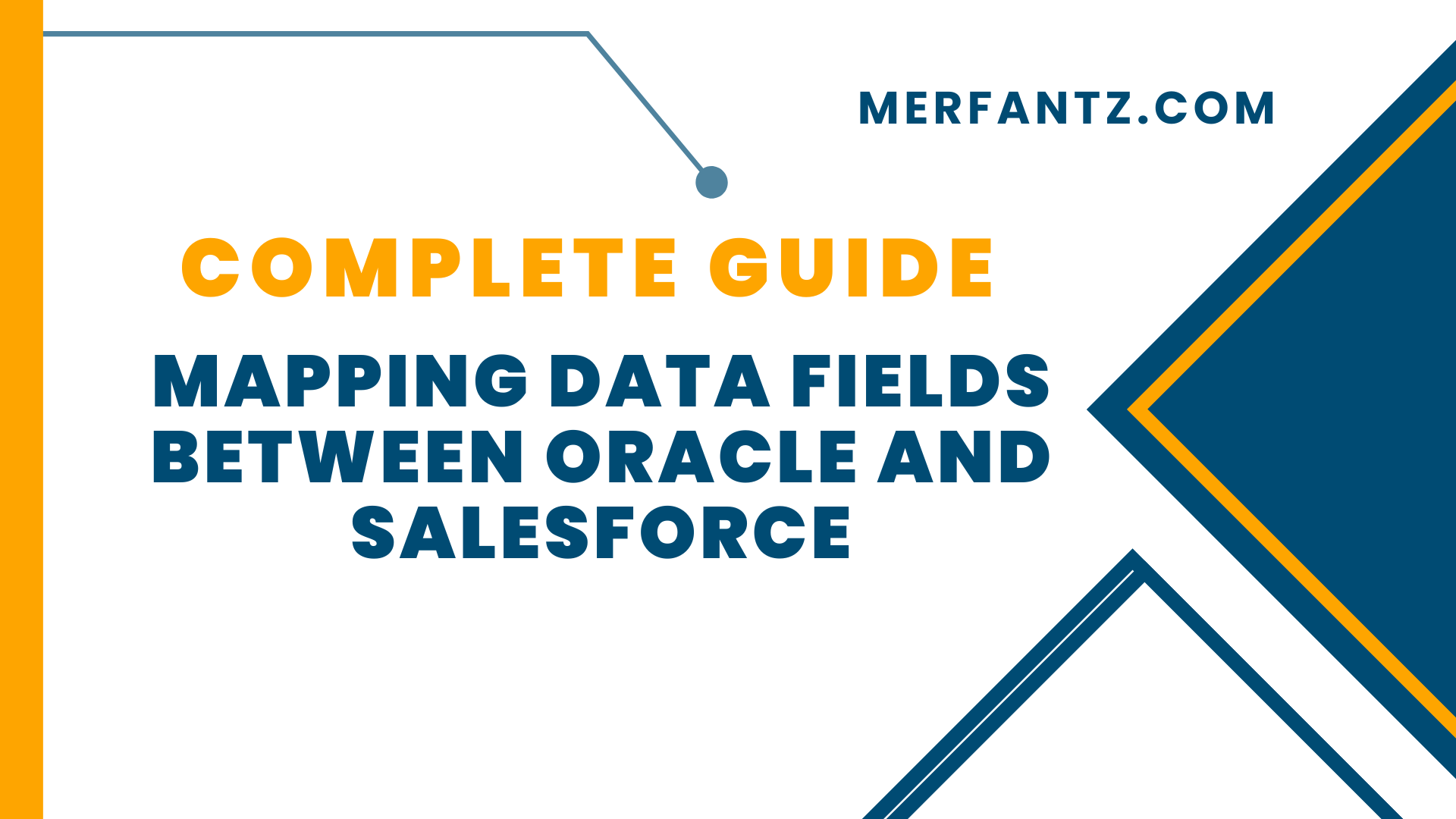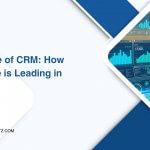Understanding Data Field Mapping: Key Concepts and Benefits
Data field mapping is a crucial process that enables seamless integration and synchronization between Oracle and Salesforce, two powerful platforms used by businesses worldwide. At its core, data field mapping involves establishing a connection between corresponding data fields in Oracle and Salesforce, ensuring accurate and consistent data transfer. By mapping data fields, businesses can achieve improved data management, streamlined workflows, and enhanced productivity.
The benefits of data field mapping are significant. Firstly, it enables efficient data integration by aligning data structures and formats between Oracle and Salesforce. This eliminates data discrepancies and ensures data consistency across both platforms. Secondly, data field mapping facilitates smooth data synchronization, enabling real-time updates between Oracle and Salesforce. This ensures that the information in both systems remains up-to-date and reliable, leading to enhanced decision-making and customer satisfaction. Overall, understanding the key concepts and benefits of data field mapping is crucial for businesses looking to optimize their data flow and maximize the value of their Oracle and Salesforce investments.
Exploring Oracle and Salesforce: A Comparative Overview
Oracle and Salesforce are two popular platforms used by businesses for managing critical data and driving their operations. While both platforms offer robust capabilities, they differ in various aspects. Oracle is known for its comprehensive suite of enterprise applications, including databases, customer relationship management (CRM), human resources, and supply chain management. On the other hand, Salesforce is renowned for its cloud-based CRM solution, which provides a wide range of functionalities for sales, marketing, customer service, and more.
When it comes to data field mapping, understanding the differences between Oracle and Salesforce is essential. Oracle often requires customization and development efforts to map data fields accurately. Its complexity can present challenges, especially when integrating with other systems. Salesforce, with its user-friendly interface and extensive integration options, offers a more straightforward mapping process. However, it is important to consider the unique requirements and intricacies of each platform to ensure seamless data field mapping between Oracle and Salesforce.
Important Considerations for Data Integration
Successful data integration between Oracle and Salesforce requires careful consideration of various factors. Firstly, identifying the specific data fields that need to be mapped is crucial. Determine the key data elements that need to be synchronized, such as customer information, sales data, or product details. This will help streamline the mapping process and ensure relevant data is accurately transferred between the two platforms.
Additionally, data formats and structures must be aligned during the integration process. Oracle and Salesforce may have different data models and field naming conventions. Mapping these differences accurately is essential for seamless data integration. It is also important to consider any data transformations or conversions required during the mapping process, such as changing date formats or converting units of measurement. By addressing these considerations, businesses can achieve efficient and accurate data integration between Oracle and Salesforce.
Step-by-Step Guide to Mapping Data Fields
Mapping data fields between Oracle and Salesforce can seem like a complex task, but with a step-by-step approach, it becomes more manageable. Here is a guide to help you through the process.
- Identify the Data Fields: Start by identifying the specific data fields that need to be mapped between Oracle and Salesforce. This includes fields like contact information, account details, lead data, and more.
- Analyze Field Mapping Requirements: Understand the data structure and format of each platform and analyze the mapping requirements. Determine how the data needs to be transformed or converted during the mapping process.
- Create a Mapping Plan: Develop a mapping plan that outlines the mapping rules and logic for each data field. Document the source and target fields, data transformations, and any additional rules or validations.
- Implement the Mapping: Use the mapping plan to implement the data field mapping. This can be done manually through configuration settings or by utilizing data integration tools that offer mapping capabilities.
- Test and Validate: Thoroughly test the mapping implementation to ensure accurate data transfer between Oracle and Salesforce. Validate the mapping by comparing data records in both systems and verifying that they match.
- Refine and Optimize: Monitor the data integration process and refine the mapping as needed. Continuously optimize the mapping rules and logic to improve data accuracy and efficiency.
By following this step-by-step guide, you can successfully map data fields between Oracle and Salesforce, ensuring seamless data integration and synchronization.
Best Practices for Efficient Data Synchronization
Efficient data synchronization between Oracle and Salesforce is essential for maintaining up-to-date and consistent information across both platforms. Here are some best practices to optimize your data synchronization process.
- Define Synchronization Frequency: Determine how often data should be synchronized between Oracle and Salesforce based on your business needs. Consider factors such as data volume, data freshness requirements, and system performance.
- Prioritize Data Fields: Identify critical data fields that require real-time synchronization and prioritize them accordingly. This ensures that essential information is updated promptly and accurately in both systems.
- Implement Incremental Updates: Rather than synchronizing all data fields every time, consider implementing incremental updates. This approach only transfers the changes made since the last synchronization, reducing processing time and optimizing data transfer.
- Monitor Data Quality: Establish data quality checks to identify and resolve any data inconsistencies or errors during the synchronization process. Regularly monitor the data quality in both Oracle and Salesforce and address any issues promptly.
- Implement Error Handling Mechanisms: Prepare for potential errors or data conflicts that may occur during synchronization. Implement error handling mechanisms to capture and resolve these issues effectively, ensuring data integrity.
- Maintain Data Security: Ensure that appropriate security measures are in place to protect sensitive data during synchronization. Implement encryption, access controls, and other security measures to safeguard data confidentiality and compliance.
By implementing these best practices, you can achieve efficient and reliable data synchronization between Oracle and Salesforce, maximizing the value of your integrated systems.
Mapping Challenges and How to Overcome Them
Mapping data fields between Oracle and Salesforce can present certain challenges. It’s important to be aware of these challenges and have strategies in place to overcome them effectively.
- Differences in Data Models: Oracle and Salesforce may have different data models, field naming conventions, and structures. To overcome this challenge, carefully analyze and map the corresponding fields, ensuring data consistency and accuracy.
- Complex Data Transformations: Some data fields may require complex transformations or conversions during the mapping process. It’s crucial to understand these transformations and implement them accurately to maintain data integrity.
- Customized Fields and Objects: Both Oracle and Salesforce allow customization, which can lead to differences in field names, data types, or object structures. By aligning and mapping these custom fields properly, you can ensure seamless data integration.
- Data Volume and Performance: Large data volumes can impact performance during the mapping process. To address this challenge, consider implementing data filtering or segmentation strategies, optimizing query performance, or leveraging data integration tools for efficient processing.
- Error Handling and Data Validation: Errors or inconsistencies may occur during the data mapping process. Implement robust error handling mechanisms and data validation checks to identify and address these issues promptly.
- Ongoing Maintenance and Updates: As both Oracle and Salesforce systems evolve, new fields, objects, or data requirements may emerge. It’s important to regularly review and update the data field mapping to accommodate any changes and ensure continuous synchronization.
By being aware of these challenges and implementing appropriate strategies, businesses can overcome them and achieve successful data field mapping between Oracle and Salesforce.
Tools and Technologies for Streamlined Mapping
Several tools and technologies can streamline the mapping process between Oracle and Salesforce, simplifying data integration and synchronization. Here are some popular options:
- Integration Platforms: Utilize integration platforms like MuleSoft, Dell Boomi, or Jitterbit to facilitate data integration and mapping between Oracle and Salesforce. These platforms offer pre-built connectors, mapping capabilities, and robust integration features.
- Data Integration Tools: Leverage data integration tools such as Informatica PowerCenter, Talend, or SSIS (SQL Server Integration Services) to automate data mapping tasks. These tools provide graphical interfaces for mapping, data transformations, and scheduling synchronization processes.
- Custom Scripting: In some cases, custom scripting using programming languages like Python, Java, or JavaScript can be employed to perform data field mapping between Oracle and Salesforce. This approach provides flexibility for complex mapping scenarios or specific business requirements.
- ETL (Extract, Transform, Load) Tools: ETL tools like Oracle Data Integrator (ODI) or Informatica PowerExchange offer mapping capabilities and data transformation functionalities, making the mapping process more efficient and scalable.
- API Integration: Utilize the APIs (Application Programming Interfaces) provided by Oracle and Salesforce to establish direct integration between the two platforms. This allows for seamless data transfer and mapping between the systems.
By leveraging these tools and technologies, businesses can streamline the data field mapping process, enhance productivity, and achieve efficient integration between Oracle and Salesforce.
Common Mistakes to Avoid in Data Field Mapping
While mapping data fields between Oracle and Salesforce, it’s important to be aware of common mistakes that can hinder the integration process. By understanding these mistakes, you can avoid them and ensure smooth data field mapping.
- Insufficient Planning: Lack of proper planning can lead to inaccurate mappings and data inconsistencies. Take the time to analyze the requirements, define mapping rules, and create a comprehensive mapping plan before implementing the integration.
- Inadequate Data Validation: Failing to implement robust data validation checks can result in erroneous data transfers. Validate the data during mapping to identify and resolve any discrepancies, ensuring data integrity and accuracy.
- Neglecting Data Mapping Documentation: Proper documentation of data field mappings is essential for future reference and troubleshooting. Neglecting documentation can make it difficult to maintain and update the mappings in the long run.
- Overlooking Data Transformation Requirements: Complex data transformations or conversions may be necessary during the mapping process. Failing to consider and implement these transformations accurately can lead to data inconsistencies or errors.
- Lack of Testing: Insufficient testing can result in unnoticed mapping issues and data discrepancies. Thoroughly test the mapping implementation, validate the data transfer, and address any errors or inconsistencies before deploying the integration.
- Ignoring Platform Updates: Oracle and Salesforce regularly release updates, which may introduce changes to data models or field structures. Neglecting to account for these updates can cause mapping failures. Stay informed about platform updates and adjust the mappings accordingly.
By avoiding these common mistakes, businesses can ensure a successful and error-free data field mapping process between Oracle and Salesforce.
Ensuring Data Security and Compliance during Mapping
Data security and compliance are critical considerations during the data field mapping process between Oracle and Salesforce. Here are some measures to ensure data security and maintain compliance:
- Encryption: Implement encryption mechanisms to secure sensitive data during transmission and storage. Utilize encryption protocols such as SSL (Secure Sockets Layer) or TLS (Transport Layer Security) to protect data integrity.
- Access Controls: Define proper access controls and user permissions to restrict unauthorized access to data fields and mapping configurations. Regularly review and update access privileges to ensure data security.
- Data Masking: If required, employ data masking techniques to anonymize or obfuscate sensitive data fields during the mapping process. This helps protect personally identifiable information (PII) and ensure compliance with data privacy regulations.
- Compliance with Regulations: Familiarize yourself with relevant data protection regulations such as GDPR (General Data Protection Regulation) or CCPA (California Consumer Privacy Act). Ensure that the data field mapping process adheres to the specific requirements outlined by these regulations.
- Regular Security Audits: Conduct regular security audits to assess the effectiveness of data security measures during the mapping process. Identify any vulnerabilities or gaps in security and address them promptly.
By implementing robust data security measures and ensuring compliance with regulations, businesses can maintain the confidentiality, integrity, and availability of data during the mapping process between Oracle and Salesforce.
Future Trends in Data Field Mapping: What to Expect
Data field mapping between Oracle and Salesforce continues to evolve with advancing technologies and changing business needs. Here are some future trends to anticipate in the field of data field mapping:
- Increased Automation: Automation technologies, such as artificial intelligence (AI) and machine learning (ML), will play a significant role in data field mapping. These technologies will enable intelligent mapping recommendations, automated transformations, and enhanced mapping accuracy.
- Seamless Integration with Third-Party Systems: As businesses adopt diverse systems and applications, data field mapping will expand beyond Oracle and Salesforce. Integration with third-party systems and platforms will become more seamless, requiring standardized mapping approaches.
- Real-Time Data Synchronization: The demand for real-time data synchronization between Oracle and Salesforce will continue to grow. Businesses will seek immediate updates and seamless integration between the two platforms to enable agile decision-making and enhanced customer experiences.
- Enhanced Data Governance: Data governance will become a critical aspect of data field mapping. Businesses will focus on establishing robust data governance frameworks, ensuring data quality, and maintaining compliance during the mapping process.
- Integration of Big Data and Analytics: Mapping data fields will involve integrating big data and analytics capabilities. Businesses will leverage the insights derived from big data and analytics to enhance mapping strategies, optimize data flows, and drive data-driven decision-making.
By keeping an eye on these future trends, businesses can adapt their data field mapping strategies to stay ahead and leverage the full potential of Oracle and Salesforce integrations.
FAQ
Why is data field mapping important between Oracle and Salesforce?
Data field mapping is essential between Oracle and Salesforce to ensure seamless integration and synchronization of data. It allows businesses to align corresponding data fields, enabling accurate and consistent data transfer between the two platforms. This helps maintain data integrity, optimize workflows, and enhance decision-making based on up-to-date and reliable information.
What are the key challenges in mapping data fields between Oracle and Salesforce?
Mapping data fields between Oracle and Salesforce can present challenges such as differences in data models, complex data transformations, customized fields and objects, data volume and performance considerations, error handling, and ongoing maintenance. Being aware of these challenges and employing effective strategies can help overcome them and ensure successful data field mapping.
What tools and technologies can streamline the mapping process?
Several tools and technologies can streamline the mapping process between Oracle and Salesforce. Integration platforms like MuleSoft, Dell Boomi, and Jitterbit, data integration tools such as Informatica PowerCenter and Talend, custom scripting, ETL tools like Oracle Data Integrator (ODI) and Informatica PowerExchange, and API integrations are commonly used to simplify and automate data field mapping tasks.
How can data security and compliance be ensured during the mapping process?
To ensure data security and compliance during the mapping process, businesses should implement encryption protocols, establish access controls, consider data masking techniques for sensitive information, comply with relevant data protection regulations (such as GDPR or CCPA), and conduct regular security audits to assess and address vulnerabilities.
How do I map data fields to Salesforce data fields?
To map data fields to Salesforce data fields, you need to identify the corresponding fields in your source system (e.g., Oracle) and Salesforce. In Salesforce, navigate to the Object Manager, select the desired object, and go to the Fields & Relationships section. Create or select the target field, and define the mapping rules and transformations as needed.
How to connect to Oracle database in Salesforce?
To connect to an Oracle database in Salesforce, you can use the Salesforce Connect feature. Configure an External Data Source with the necessary connection details, including the Oracle database credentials, server address, and other parameters. Once set up, you can access Oracle data within Salesforce using External Objects and perform operations like querying, viewing, and updating data.
How do I map a field in Salesforce?
To map a field in Salesforce, go to the Object Manager and select the object where you want to map the field. Navigate to the Fields & Relationships section and either create a new field or select an existing one. Define the data type, field properties, and validation rules as needed. Save the field, and it will be available for mapping and integration with other systems.
How do I see field mappings in Salesforce?
In Salesforce, you can view field mappings through various methods. One way is to navigate to the Object Manager, select the desired object, and go to the Fields & Relationships section. From there, you can view the existing fields and their mappings. Additionally, you can use tools like Salesforce Data Import Wizard or data integration platforms to visualize and manage field mappings across multiple objects and systems.
Conclusion
In conclusion, mapping data fields between Oracle and Salesforce is a critical process for seamless integration and synchronization. By understanding the key concepts, considering important factors, and following best practices, businesses can achieve efficient data transfer and maintain data integrity. With the right tools and technologies, businesses can streamline the mapping process, avoid common mistakes, and ensure data security and compliance. Looking ahead, businesses can expect automation, real-time synchronization, and enhanced data governance to shape the future of data field mapping. Embracing these trends will enable businesses to maximize the value of their Oracle and Salesforce investments and drive better business outcomes.
Author Bio
Co-Founder & CMO at Merfantz Technologies Pvt Ltd | Marketing Manager for FieldAx Field Service Software | Salesforce All-Star Ranger and Community Contributor | Salesforce Content Creation for Knowledge Sharing






